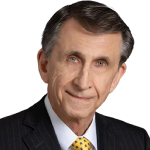|
|
Last Modified on Jun 19, 2025
Hurricane Ida swept through the coastlines of America, causing flood damage from torrential rain to thousands of homes. This category 4 hurricane included winds up to 150 mph. The flash floods wreaked havoc on basements and rooftops.
Many homeowners were without power for weeks and returned to homes laden with black mold from the floodwaters. Entire houses will need to be gutted and redone. But where do you even start? And how are you going to pay for it all?
File a Claim with Insurance Right Away
Insurance claims are your first step to securing the money to start renovations on your home. The problem with home insurance is that many homeowners do not select flood damage in their policies. Without floodwater damage insurance, which is an add-on, your home insurance will not help much.
Look into repairing the damage done by the high winds with your insurance company if you do not have floodwater coverage. Roof shingles, broken windows, loose or missing siding will all qualify under this category. Also, having a lawyer can help to ensure the insurance company hears you and takes your claims seriously.
Will Federal Programs Help If My Insurance Does Not Include Flood Damage?
Yes, the federal flood programis prepared to handle 100,000 claims from those affected by Hurricane Ida. Changes made to the federal flood program should help homeowners secure the money they need to start gutting their homes without waiting weeks and weeks.
Because adjusters are stretched thin during these times, you can secure an advance of $20,000 for flood damage to get started on your repairs before an adjuster sees your home. This will be subtracted from your total in the end.
Many homeowners in Louisiana have flood damage included in their home insurance because of the high likelihood of hurricanes in that area. As for homeowners in the Northeast with extensive flooding in their homes will need to call on the federal flood program.
Every Homeowner Policy Is Different
Even when you have flood damage on your homeowner’s insurance, sometimes the coverage does not extend to basements. However, if you have a basement, there is extra insurance some have known as sump-pump coverage.
Look into your policy and find answers as soon as possible about what your insurance includes so that you can get started on repairs. For example, some basement insurance covers large appliances or HVAC systems but does not include couches, TVs, or sound systems.
Every policy is different, so it’s best to find out as much as you can so that you can be informed on your claim payouts.
What to Do If You Start Repairs Before an Adjuster Sees the Property
Imagine all of the homes that an official adjuster for insurance claims or the federal flood program needs to see. It will take months for the adjusters to reach all of the houses and process their estimates of the damage. You cannot let the murky water and black mold grow as you’re waiting for this process.
File your initial claims with evidence of your damage. Here are some tips and pieces of evidence to keep along the way to show how extensive your home damage is from Hurricane Ida:
- Pictures of Damage: Take extensive photos of the damage right when you get back into your home. Include a video of the soaked carpet if it is difficult to see in the pictures. You can document the walls and the lines where the water goes up along the walls—document appliances and furniture that is rendered useless after the flood.
- Before Pictures: Along with the after pictures, you can show before photos of the shape your home was in before the flood. This will help show contrast to how devastating the flood was to your property.
- Do Not Climb on the Roof: Safety first as you document the damage. Therefore, do not climb on the roof. Leave that to the professionals. Instead, do what you can to assess the damage done to your roof from the ground.
- Keep Samples of Carpet: As you are stripping your home of all the damage incurred, keep pieces of the carpet that you have to pull out. This mildew-filled rug will show why you had to move so quickly to repair your home after the flood.
- Throw Out Mold-Covered Items: Once the pictures are taken, trash all of the items that have mold growing on them. Breathing in the toxic fumes from the mold can lead to health problems. Take swift action to remove mold from your home.
- Keep Chunks of Damaged Dry Wall: If you experienced flood water that reached up into the walls, you could keep some chunks of drywall to show that you had to gut the walls and insulation. Items that are wet from floods will never be the same, even when they dry out. So this evidence will be helpful for the adjuster to go along with the pictures.
Of course, speak with the insurance company or federal flood program to find out which steps they want you to take before starting renovations. These tips are a good start.
What If Your Flood Payout Isn’t Enough?
If you’ve heard back from insurance and the estimate is much less than you need to make the repairs on your home, you can submit the claim for review. You can also hire a public insurance adjuster to give a competing estimate on the flood damage.
A great help while fighting for your insurance claim payout can be hiring an expert lawyer to take care of all of the steps for you. When your home is in ruins, it is hard to focus on the red tape. A trusted law team is well-versed in speaking with insurance companies and securing the funds you need to get your home back.
Contact a Lawyer Today
We want to help you with your Hurricane Ida claims. If you don’t have floodwater insurance coverage or are unsure which federal programs cover your losses, give us a call at Gainsburgh, Benjamin, David, Meunier & Warshauer, L.L.C. We can help you document the flood damage and get started on repairing your home: (504) 522-2304 .





